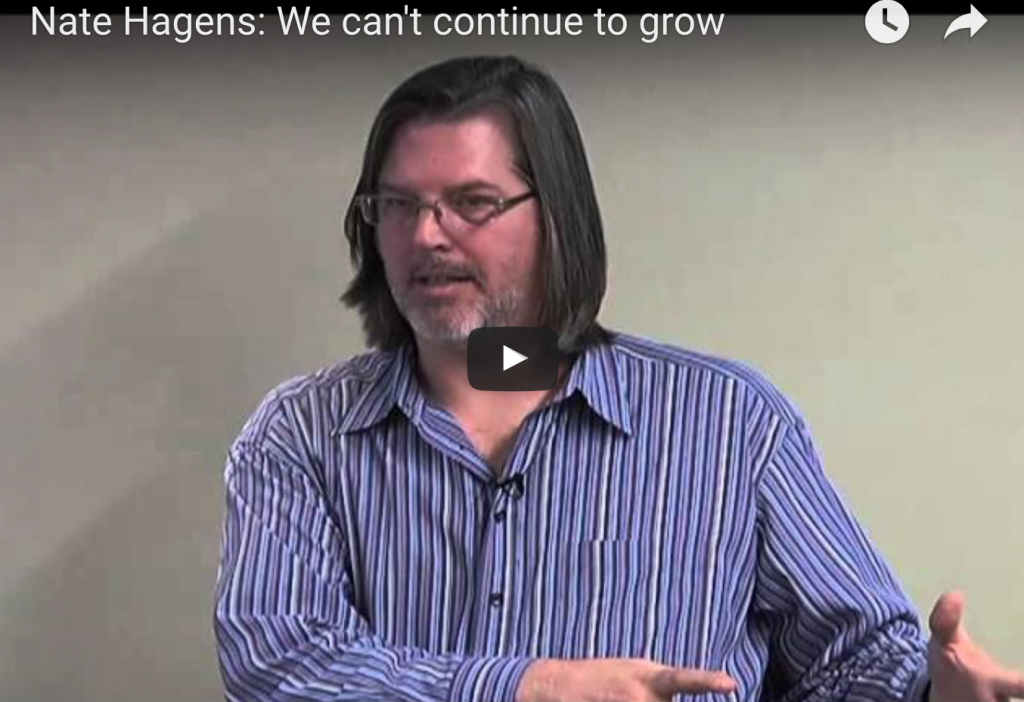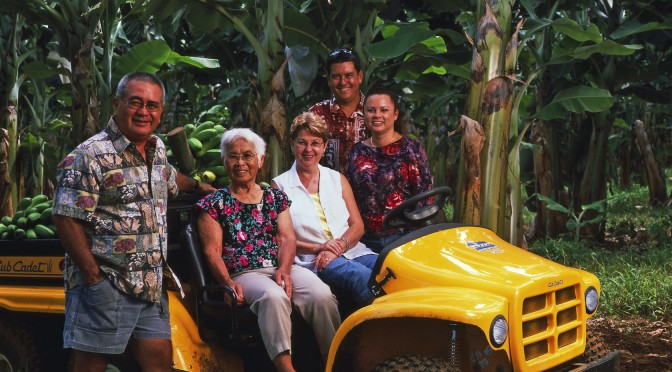The University of Hawai‘i at Hilo will begin offering a certificate in Energy Science in the Fall 2016 semester, pending official approval by the UH Hilo Curriculum Committee, which is expected.
“Energy science is a really critical component of our future,” says Bruce Mathews, interim dean of the College of Agriculture, Forestry and Natural Resource Management. “It’s tied right in with our local agriculture. Our energy is dependent on outside resources, and nutrients used as fertilizers are derived from outside energy, too. We are so dependent on imported fossil fuel – oil and coal. For us to become self-reliant is extremely critical.”
He says they hope to eventually offer a whole undergraduate degree in Energy Science; currently, there is no such undergraduate program in the U.S.
From the University of Hawai‘i at Hilo:
The conversion of energy to useful forms for humans, its distribution and its impact are among the most pressing issues of our time. They are at the same level as climate change, population growth and social justice. The Certificate in Energy Science provides students with extensive, integrated knowledge about this field – enough to access entry-level jobs. The courses take advantage of the Island of Hawaiʻi’s privileged opportunities in solar, wind, biofuel, tide and geothermal energies, with field trips planned according to the course subject matter.
The management and policy concentration has an emphasis on policy, yet it requires at least two courses with significant technical content. It is intended for students majoring in humanities, social sciences, business and similar fields. It can lead to potential careers in energy policy or management. The technical concentration is a more rigorous program consisting of year-long surveys of energy science and biofuels as well as a laboratory course. This concentration will prepare students for graduate work in the energy field. It is intended for students in the natural sciences or CAFNRM. It will lead to potential careers in technical areas.
The certificate program offers two tracks. The first is for non-science majors and focuses on energy policy.
Mathews talks about what he calls a gap between policy people and science. “If you can get some policy types more informed about energy science, it can better inform policy,” he says. “A lot of people in the college feel that many of our issues in society today come about because policy-trained political scientists and lawyers don’t have a deep enough breadth of knowledge in the sciences to be as effective as they could be when, as politicians, they are making decisions for our future.”
“There’s sort of a postmodern philosophy that has gone beyond the age of reason,” he says. “It’s the idea that ‘Whatever you believe is fine.’ And, ‘If I believe it, then it’s true.’ It’s about belief, rather than judgements that are based on the best evidence, and I think that will be a huge challenge to Hawai‘i as we move forward on energy. For instance, when people believe all geothermal is bad no matter how it’s done. How will be move forward on these resources if people think like that?
“That’s why we wanted to have that part of the curricula open to students who are not of a scientific nature,” he says.
The second Energy Science Certificate track, a more rigorous one, is for people with natural science backgrounds.
He says they are also working on offering Energy Science courses for non-credit through the university’s continuing education program, though that’s not available yet.
While the program officially starts in the fall, two Energy Science courses will be offered this summer.
Hilo Physics Professor Philippe Binder will teach in and has taken the lead on promoting the Energy Science program. Engineering professor Shihwu Sung, whose focus is biomass, was recently hired to teach in the new certificate program. Next, says Mathews, they will hire an assistant professor who focuses on managing energy grid systems and energy efficiency in rural areas.
He says his biggest worry is that students won’t sign up for the program because they are fearful of the science. “Students are coming to college inadequately prepared from high school and I see it all the time when I talk to high school students,” he says; “they have a huge fear of the physical sciences.”
He says, though, that Dr. Binder realizes this and is willing to help. “As long as a student is motivated,” says Mathews, “he’s willing to tutor students and will open up office hours to do this. For this program to be successful, it’s going to take encouragement and intervention. We will also make courses as engaging as possible, with exciting field trips and laboratories. Places like the Natural Energy Lab, HELCO, Pacific Biodiesel, and people in the solar sector have said they will do anything they can to help us with these courses. There’s a lot of support in the Hilo community for this program. We welcome other support from industry, too, in terms of interaction with students, and hiring students as interns.”
“All universities are increasingly having to operate like businesses and try to generate revenue,” he says, “but there are some things the state needs to realize are important to our future. These sorts of programs have to be supported and go forward. When problems arise, it will be more costly if we don’t have people in the state who are trained about our food and energy problems. The nexus of food, water and energy is the core. We need a lot of energy to grow our food, and we can’t grow the food without water. It’s all connected to the future of humanity, and so these are areas that need to be critically protected.”
“We will also miss out on federal grants and such if we don’t have a program in place for them,” he says. “It’s critical for us in securing research money down the road.”
Mathews says an Energy Sciences certificate, which will take two to three semesters to complete, will give a student a leg up in terms of entering the energy sector after college.
“Companies like HELCO and those in the solar industry, for instance, will appreciate someone who has training in energy sciences. It’s a starting point.”
***
Richard says he couldn’t be happier that UH Hilo is moving toward a degree in Energy Science, something that is not currently offered anywhere else in the U.S.
“I’m especially interested in this because a group of us are promoting the benefits of an energy utility co-op. Doing work that is effective as well as affordable is most important. It’s all about doing work and it takes energy to do work.”
“I am very pleased to have enabled Nate Hagens to be the program’s first guest speaker,” he says. “I am going to see if we can bring in more world class speakers in the months and years to come.”

 He will speak about our need to adapt for the changes happening around us. He feels strongly that it’s today’s young people who should be concerned, because it’s their time coming up, and he will discuss what we need to do to make their world a better place.
He will speak about our need to adapt for the changes happening around us. He feels strongly that it’s today’s young people who should be concerned, because it’s their time coming up, and he will discuss what we need to do to make their world a better place.